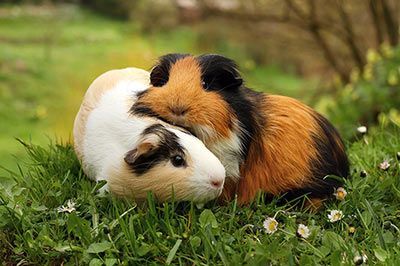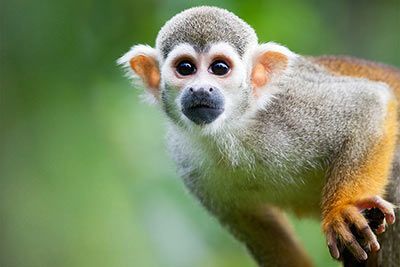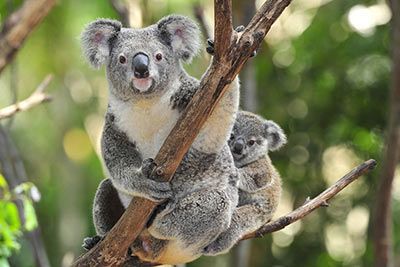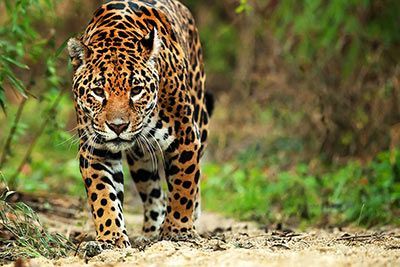Moose
Moose Facts
| Size | Up to 82 inches (230 cm) (shoulder height) |
| Speed | Up to 37 mph (60 km/h) |
| Weight | 440-1,540 pounds (200-700 kg) |
| Lifespan | 10-16 years |
| Food | Grass, water plants |
| Predators | Bears, wolves |
| Habitat | Northern Europe, Northern Asia, North America, Greenland |
| Order | Ungulates |
| Family | Deers |
| Subfamily | New World deers |
| Scientific name | Alces alces |
| Characteristics | Males: open-hand shaped antlers, solitary animal |
Main Characteristics
Moose are very large and heavy ungulates. They reach an impressive shoulder height of 82 inches (210 cm). One of their most striking features is the broad, palmate antlers on males. They have a spread of 79 inches (200 cm). Also, the animals can be easily distinguished from other ungulates by their large dewlap.

Distribuation and Habitat
Moose live in colder regions in Northern Europe, North Asia and North America. As a habitat, they prefer dense, hilly forests such as coniferous and deciduous forests. They are best protected from predators there. In North America, there are about a million moose. In Sweden there are around 350,000 and in Norway 120,000-150,000. Recently, 10-15 moose have even been spotted again in Germany. They live in forests in northeast Germany.
Life Style
Moose are solitary animals that usually only meet during mating season. They are active both during the day and at night. They remain loyal to their territory and roam it in search of food and mates. During mating season they fight with rivals.
Anatomy and Appearance
Size and Weight
Moose are the largest deer. They reach a shoulder height of 55-82 inches (140-210 cm). Bulls weigh around 840-1,540 pounds (380-700 kg), females weigh 440-1,080 pounds (200-490 kg). In 1987, a particularly large bull was found on the Yukon River (USA). It weighed 2,808 pounds (820 kg) and stood 7.6 feet (233 cm) high at the shoulder.
Size Comparison Between Moose and Humans
It's easier to imagine its size when a moose stands next to a human. That's why we made a pictorial comparison of humans and moose for you:

Antlers
• Why Do Moose Have Antlers?
Bulls wear antlers to intimidate other male moose and to impress female moose.
• Why Is it Called Palmate Antlers?
Particularly large antlers are called palmate antlers, because they look like an open hand.
• Why Do Moose Shed Their Antlers?
The antlers of a moose can weigh up to 44 pounds (20 kg). The record for the heaviest antlers ever is at 79 pounds (36 kg). Moose drop their antlers in winter time because they find less food during this time and it saves energy to carry less weight. They just fall off and grow back again in spring.
Dewlap
Moose have noticeably long hair under their chin. It is often referred to as a goatee. In fact, the hair is actually not that long. Underneath is a so-called dewlap - a fleshy fold of skin. It's just not that easy to see it under the thick coat. The dewlap is also called a bell. Both the bulls and the cows have one. In male animals, however, it is usually larger and can be up to 20 inches (50 cm) in length.

Moose or Reindeer – What’s the Difference?
Are moose and reindeer the same? No, but moose and reindeer are closely related. Both species belong to the deer family. However, moose are significantly larger, have longer legs and, in contrast to reindeer, have a dewlap. In moose, only the males have antlers, while in reindeers males and females grow them.
Diet
Moose are herbivores. Their diet primarily consists of young tree shoots and aquatic plants. They require a large amount of food, because they are so big. In summer they eat around 70 pounds (32 kg) per day. During winter time they eat around 33 pounds (15 kg) because they don't find much to eat in the snow. Moose love to plunder trees. They have a thing for apples, and sometimes they come across fermented fruits lying on the ground. Eating those apples makes them dizzy in their heads.
Nature und Temperament
Are Moose Aggressive?
Are moose dangerous? The animals are rather calm and good-natured. However, they can quickly feel threatened and can become aggressive. People, dogs and traffic can cause a moose to attack unexpectedly. Especially when it is hungry and tired. If you see a cow with its offspring, you should be particularly careful and not get too close to them.
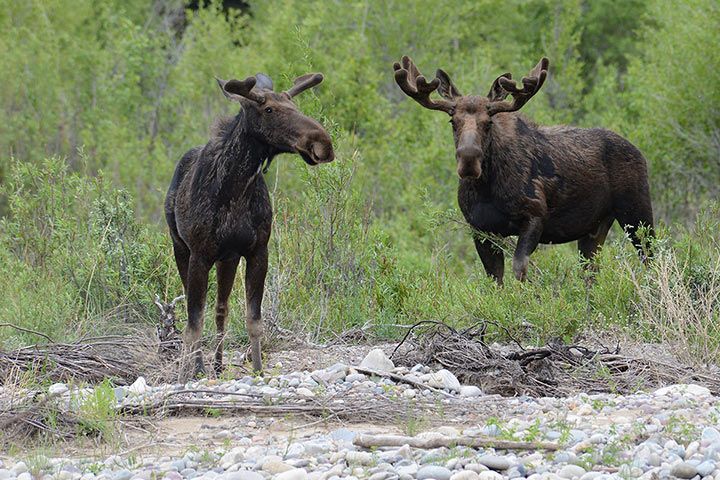
Behavior
How Do Moose Survive the Winter?
Right before winter, moose develop thick, warm winter fur. The long nose helps warm the cold air before it enters the lungs. During the cold season the animals find little food and have to live on the few thin twigs they find in the snow. They build up a thick layer of fat before winter arrives. They use it as a source of energy throughout the cold months.
Defense
Moose know how big and strong they are. That's why they don't run away when a predator approaches. It's the other way round. They attack the predator to put it to flight. They are very strong and have very flexible joints that allow them to kick sideways with their hooves.
Senses and Abilities
Speed
Although moose weigh up to 1,540 pounds (700 kg), they can be surprisingly fast. They reach speeds of up to 37 mph (60 km/h).
Swimming and Diving
Moose swim and dive very well. They even dive to depths of over 18 feet (5.5 meters) – to feed on water plants. They are the only animals in the deer family that can feed underwater. Muscles and fat pads on their nose help them to close the nostrils underwater.
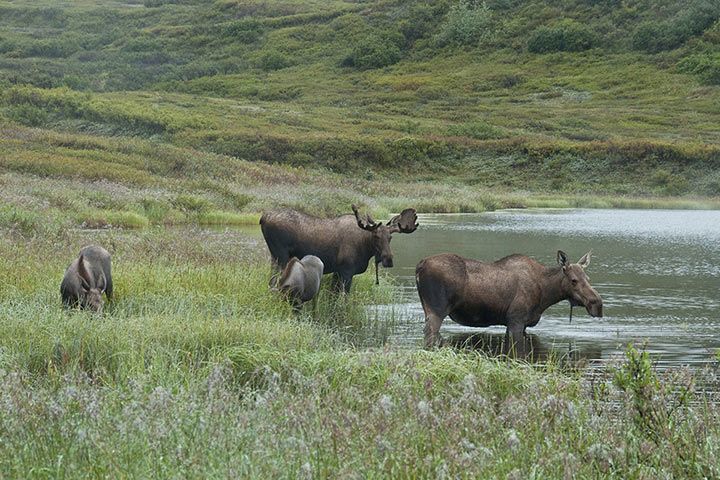
Life Expectancy
In the wild, moose reach an age of around 15 years. One individual even lived to be 27 years old.
Enemies and Threats
Natural Predators
It is hard to imagine that an animal of this size could have any enemies. After all, moose can also kick pretty hard with their hooves. A wolf pack or a bear has little chance to bring down an adult moose bull. Of course, this is totally different with a calf, an old or a sick moose. They are not able to defend themselves well.
Worms, Parasites and Diseases
The biggest threat to moose are roundworms, whipworms, dog tapeworms and liver flukes. They can weaken them to such an extent that they end up dying. Ticks can also carry diseases that are fatal to them.
Car Accidents
Every year several thousand moose die in traffic. It's not because they invade areas populated by humans. It's the other way around. It is us who are building more and more roads into their habitat. Moose are very large and heavy and rarely need to run away from anything. That's why they simply stop when a car approaches them. Unfortunately, the cars can't brake quickly enough to avoid a collision. In Sweden and Norway, around 2,000-5,000 animals die this way every year.

Reproduction
Rutting and Mating Season
The mating season usually begins in autumn. The male’s antlers are then fully grown and “ready for use”. The bulls fight with other males to determine the hierarchy. They focus so much on the fights that they hardly eat anything and lose a lot of weight. This period is also referred to as the “rutting season”. The bulls start to growl and roar. They want to draw attention to themselves and encourage moose cows to mate. The mating itself only takes a few seconds.
Gestation Period and Birth
When do moose have offspring? Calves are usually born in May or June after a gestation period of about eight months. When it is born, a baby moose stands already 31 inches (80 cm) high at the shoulder and weighs 22-33 pounds (10-15 kg). After just 20 minutes it can already follow its mother. The mother moose keeps her baby close for approximately one year, fiercely protecting it. It is better to maintain a safe distance when encountering a female moose with its baby.
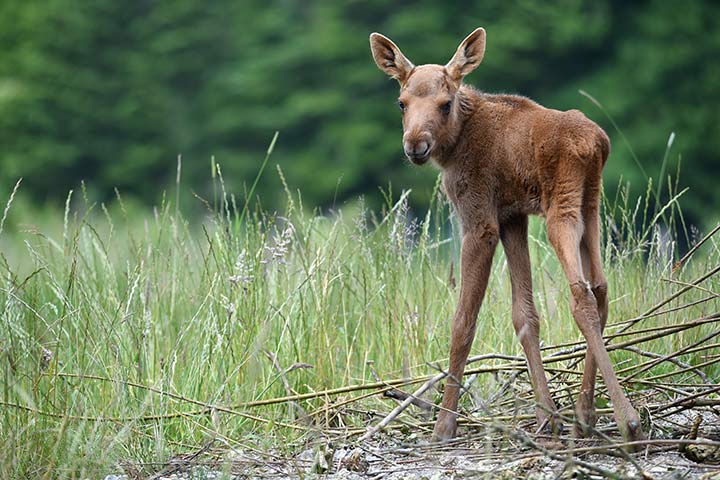
Fun Facts
Moose Names
In Germany a moose used to be called “Elch”. This is related to the British word „elk“. But please note: In North America an “elk” refers to a completely different animal: the wapiti deer. A female moose is called a cow, a male is a bull and a baby is a calf.
National Animal
The moose is the national symbol of Sweden.
Moose Test
When moose cross the road, they do not dodge cars. This behavior gave the name to the “moose test”. It is performed to find out how well a car can evade suddenly appearing obstacles without skidding. Of course, the test is not carried out with live moose.
The Moose Is Related To:
- Deer
- Reindeer














